Artist Interviews 2021
Stephanie Cate 
By Johnny Otto
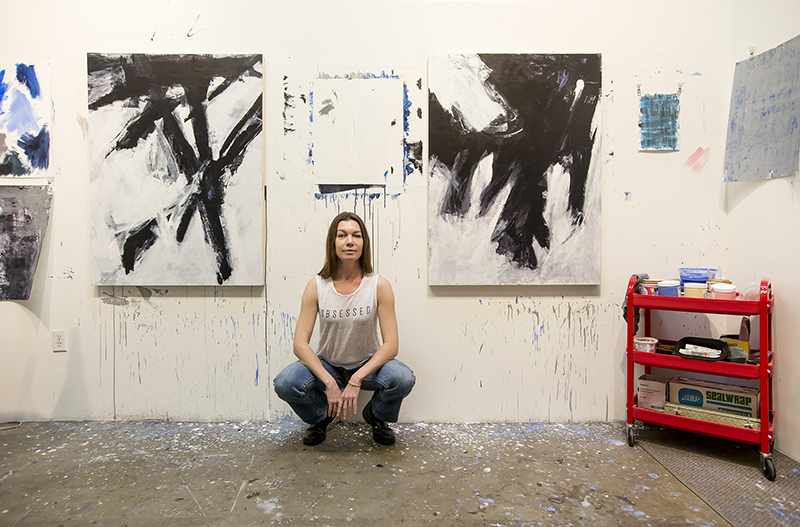
Decay can be beautiful. You certainly find a way to make it so, in your art. You mentioned being influenced by "grand decaying beauty of former centuries", which you saw in France when you were a child. Do you still see that where you are now, in Joshua Tree? How are the desert and the city alike and different?
Oh certainly here in the High Desert as it’s called, there are remnants and ruins of
Route 66 classic Americana of the 50’s scattered all around. This area was part of Route 66 scenic highway during the peak of cross country road travel in the US but fell out of fashion in the late 60’s. Many small businesses struggled or went under completely as a result. Boarded up homesteads, storefronts, bowling alleys, cafes from the 50’s era are a perfectly normal sight. The scenery is dotted with period trailers and campers. Collectors have discovered the area and now the iconic Airstreams and Spartans are being revived.
There’s equally little time capsules around of old store fronts and motels from the 60’s and 70’s where everything is original still from signage to wall paper and hardware fixtures. The later are growing more scarce now that the desert is popular again. Places are getting bought up and remodeled. Some folks are doing total tear downs and some are making the effort to keep the aesthetic authentic.
I do thoroughly love these modern day ruins of ours here in America. It wasn’t really that long ago but there’s no mistaking that culturally it was another era.
There’s something sad nostalgic and mournful about these lost places. It’s a sharp reminder of our mortality as well and the unrelenting impact of time. To me that still is creatively captivating.
The ways in which the desert and city are different is the that the desert is vast open and quiet. A very loud silence that is powerful and also nurturing.
In contrast the city is a vast chaotic electric socket that is energizing yet depleting at the same time.
The desert and city are both alike in their potential for loneliness and isolation.
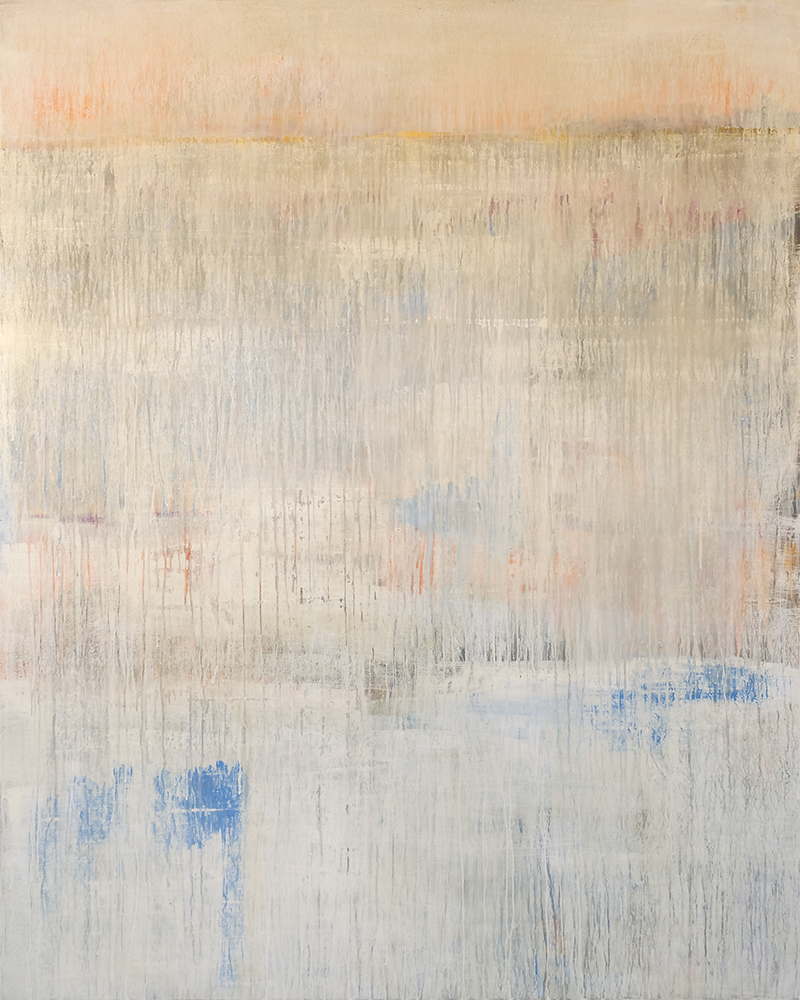
You went to college in Boston, is that right? What was that like and how did you influence you as an Artist? Did you find it useful to go to college or a distraction?
Yes I went to Massachusetts College of Art and Design in Boston. It was truly a mixed bag. In some ways it was almost debilitating! The end of semester critiques were brutal. Some students never returned. I almost didn’t return once for what felt like an artistic lynching of sorts. I found some students and teachers surprisingly very close minded and incapable of understanding mixed-media. Looking back, it was a more conservative school back then. I would have probably thrived in another type of art school with a more liberal curriculum.
However, the experience of art school brought me many strengths that I use every day, such as conviction. If you don’t believe in what you’re doing no one else will. And it’s very possible no one will believe in what you’re doing even if you do. So understand what you’re doing and why and keep doing it – and it needs to be a powerful enough urge that applause and approval mean nothing. Or at least, the lack of it need not sway you or cast doubt. You need to have a back bone of steel to survive art school intact. Yet I don’t think self-taught is the way to go either. You do get pushed further outside of your comfort zone in an academic setting. Even if you end up just quietly defending yourself and your work. You learn to trust your instincts and yourself ultimately. Those are life skills.
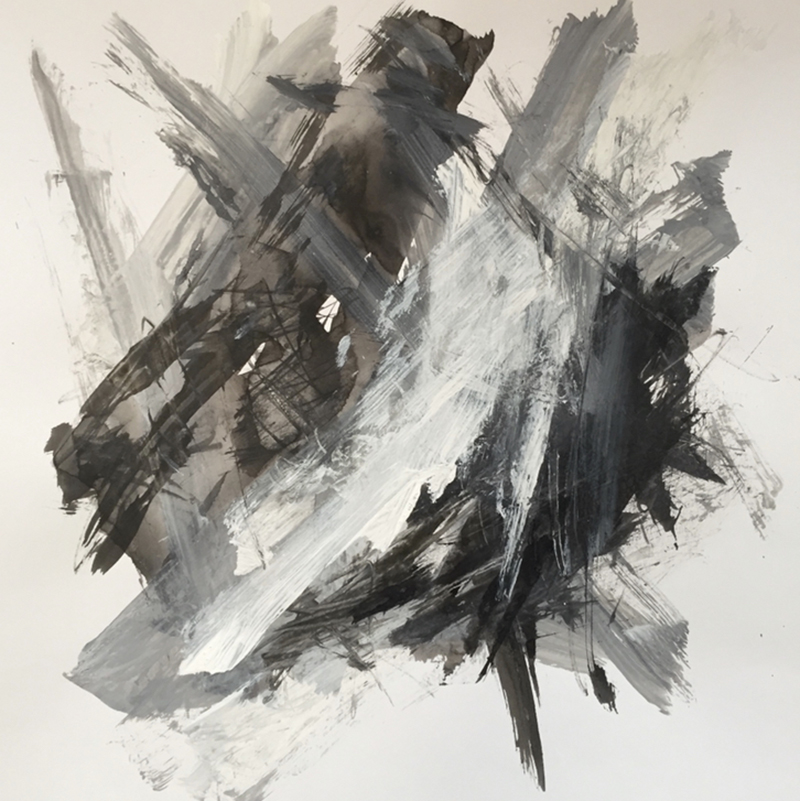
Abstract art is open for more interpretations than any other form of art. What does it mean to you? Why are you gravitated toward creating in a style that leaves so much room for perception?
Well that’s one of the many things I love about abstract art is the vast array of interpretations one can make about a piece. When we look at a landscape or a figure we are cognizant and agree and recognize it as such, immediately it looses some possibility for our imagination to take flight. We see it, we agree, we stop thinking.
I’m over simplifying of course, I certainly have been moved by very representational imagery but I’m just explaining why, for me, abstraction has that extra magic in it that fascinates me. I love creating a painting and hearing all the very different reactions from people. Abstraction is like a mirror. It reflects ourselves back to us. Our associations, our past experiences, our longings and dreams … that’s what we bring when we look at an image of something that cannot be defined by the literal part of the brain.
It’s like your stuck with yourself in a room alone. I think that’s why most people are terrified of abstract art. It’s confronting. But if you approach it lightly and playfully, it can be very liberating.
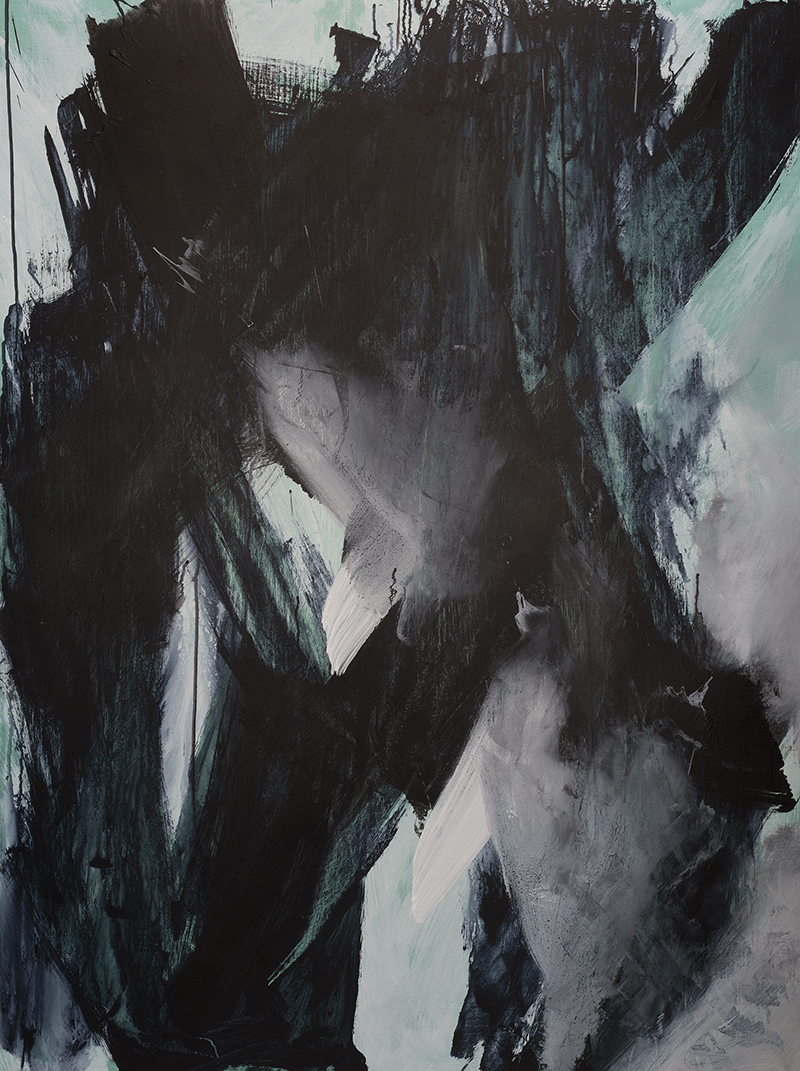
I love to talk to other Artists about their process and medium. Can you walk us through a typical painting from inspiration to completion? What material you use? Do you like to layer your pieces? Use any exotic materials?
The journey of painting fascinates me. I’m trained in oils but prefer acrylics at this time and have found various mediums to combine into the paint to create that lush sensual translucent texture of oil. I begin a piece with a general mood or emotion I want to convey however I always let the work take over and direct me. The end result is an unexpected discovery. The subconscious for me, is a strong guide to the act of emoting. I work intuitively, trusting the process and its’ direction. I paint to distill essence of a relationship between the forms and lines, where two edges meet. Magic and mystery happen there and I feel compelled to explore it. Layers of texture, veils of color and shapes interconnecting, ambiguous space, the dance between the bold gestural stroke and the fragile veiled shadows create a dialogue of tension and contemplation. My aim is that the atmospheric landscape that emerges is one that the viewer can make their own personal discoveries within.
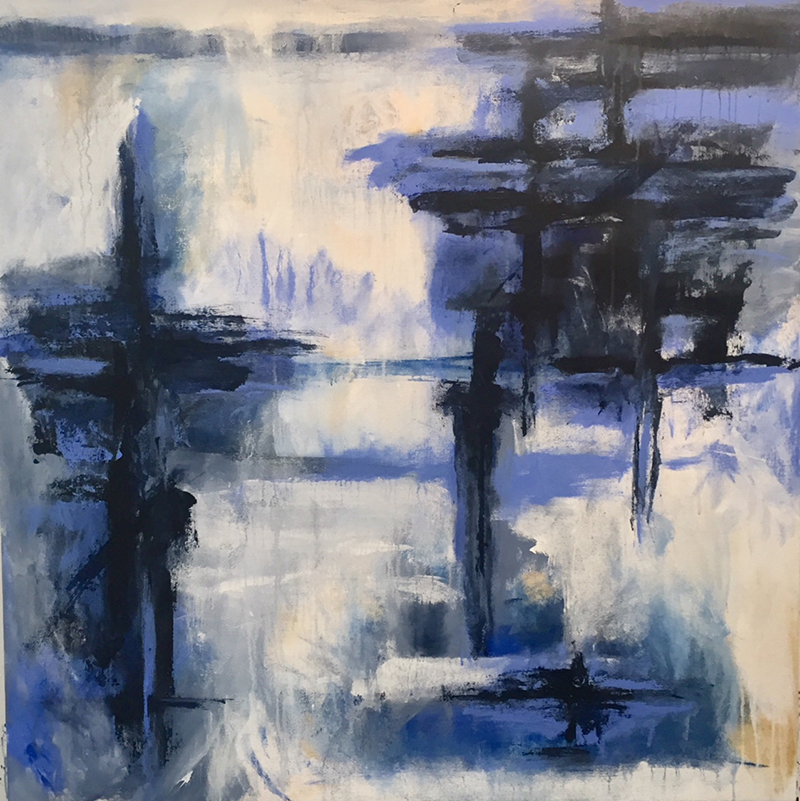
Living out in the desert, is it more difficult to connect with the art community, to do shows and sell your art? What are the key differences of city life and desert life, for an Artist? If someone wants to move out of the city, what advice would you give?
The desert very organically attracts artists. It’s an austere vast canvas with horizon lines beyond understanding and the ability to bring awe and a very refreshing feeling of “smallness” not unlike how it feels to stand in front of a raging ocean. I think as artists we do climb up inside our heads too often and for too long so being in a mighty environment where nature rules is a great way to snap ourselves into perspective and a greater contemplation of the “big picture”. You don’t get that greater perspective in the same way with city life. But then again, I paint more from the spiritual realm. And I don’t mean that in a lofty arrogant way, I just mean, what inspires me is universal feeling and emotion and psyche. If I was a political artist, I would hands down be making my art in the city. That’s where your nectar is going to be. Knowing yourself as an artist, is knowing what lights you up and gets you going. If you creatively thrive in tension, bustle and chaos, the city is your place. If wide open skies, unobstructed views and the natural world speak to you, get out of the city. If you’re serious, you’ve got to put yourself where your muse can find you.
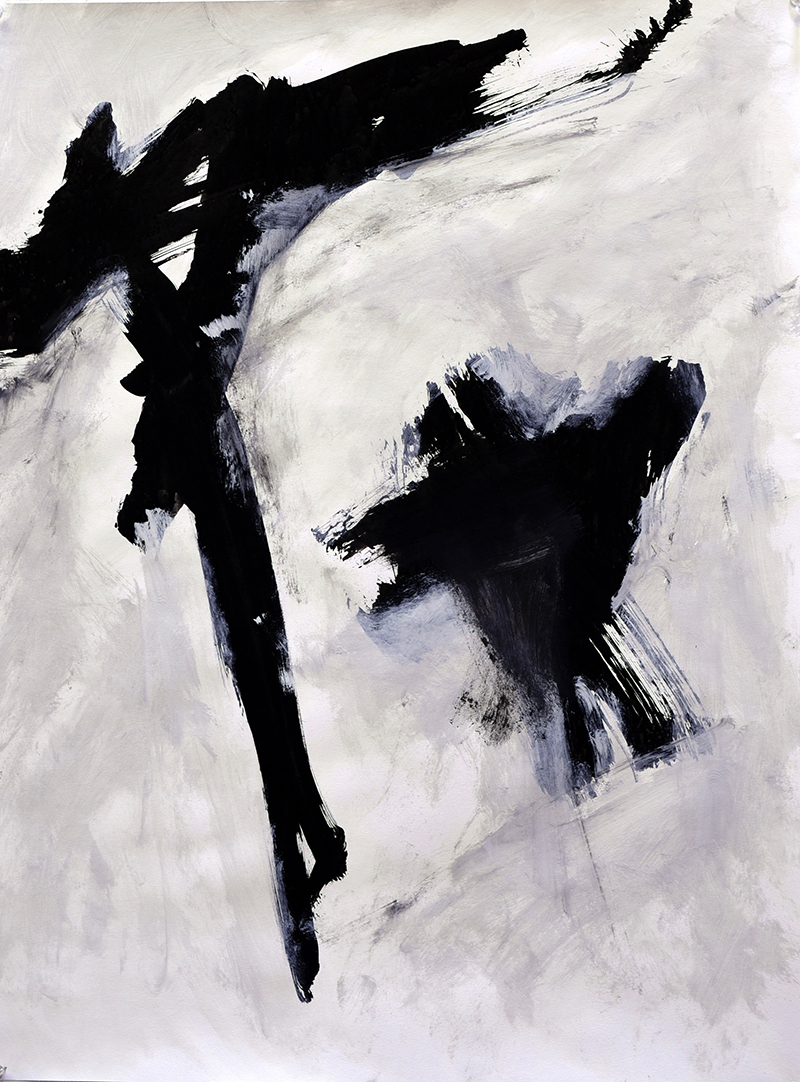
Speaking of shows, do you have anything planned in the near or far future? What are your immediate goals? Are you selling on any platforms?
I’ll be showing this Fall or early Spring at my gallery J.J. Harrington down in the Palm Springs area. Also I’m preparing for the Highway 62 Art Tours coming up this October. It’s an annual event here in the High Desert where participating artists open up their studios to the public for two or three weekends in October. It’s a great way for folks to visit and chat and buy art directly from the artist in their studio www.hwy62arttours.org
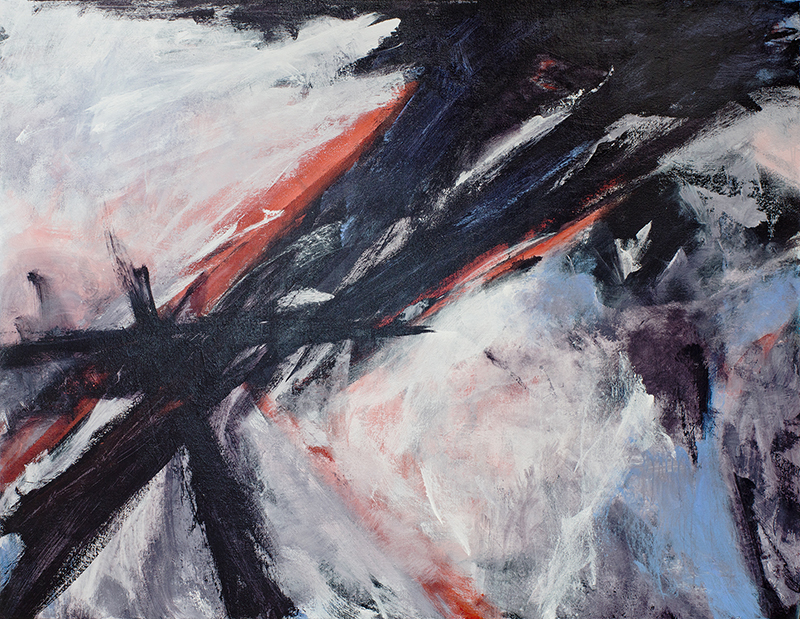
I use to know you for your collage work. Do you still do that type of work or have you moved on completely?
It’s true, when we first knew each other I was doing photographic collage. I haven’t done collage in years but I miss it and find myself wanting to express myself that way again. At a yard sale recently I came across a vintage suitcase full of Louis L’Amour Western paperbacks. I’m going to use them for the backing of a desert collage series I’m planning to do. The first of which I’ll show during the Art Tours this October.
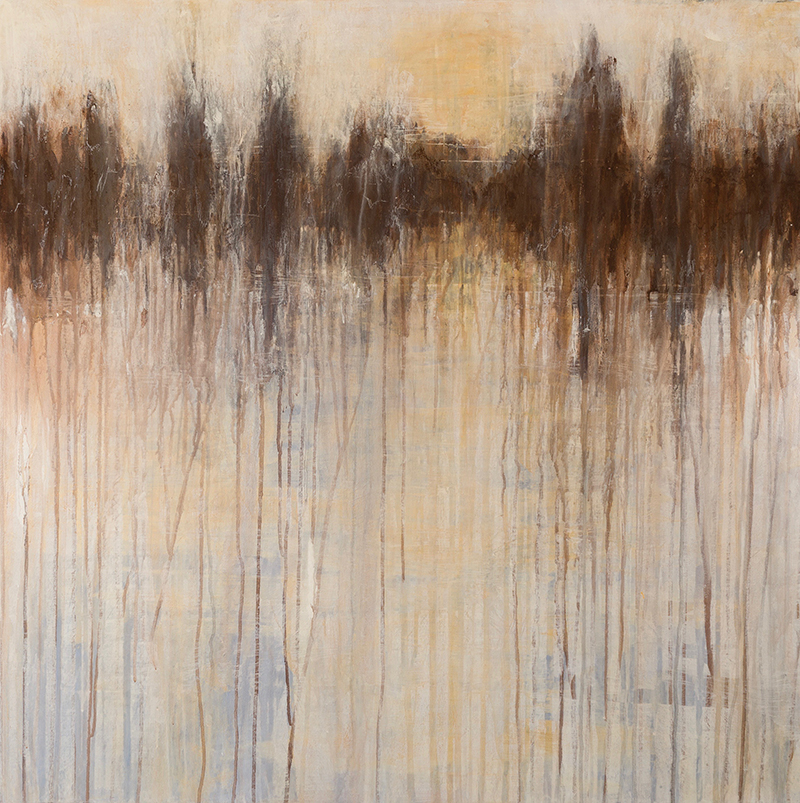
What is the importance of color in your work? Some of your pieces are brown and earthy, even monotone, while others seem to be sunlight orange. Is that just the reflection of your atmosphere and when and where you paint?
I do generally like a restricted palette of no more than 3 colors and I do tend to gravitate towards neutral or monochrome hues. For me the importance is not the color but the shapes and contrast they create together and the relationship between them as their edges merge. I find monochrome colors can communicate this dialogue more without the distraction of color. But since my time in the desert, black has given way to ochres and umbers and moody violets. And I’ve been enjoying the stark contrast of a shocking pink or electric orange like I see in the dramatic sunsets here. I think color with continue to be an area I explore in my new upcoming work.

|
|

